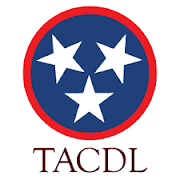The Tennessee Court of Appeals released its opinion today in Affainie v. Heartland Express Maintenance Services, Inc., No. M2019-01277-COA-R3-CV (Tenn. Ct. App. Apr. 1, 2020). The syllabus from the slip opinion reads:
This appeal arises from a hit–and–run involving a tractor-trailer and a passenger vehicle. The plaintiffs—the car driver and passenger—alleged in their complaint that the defendant trucking company owned the tractor-trailer that collided with their vehicle on the interstate. The plaintiffs also served a copy of the complaint on the car owner’s uninsured motorist carrier as an unnamed defendant. Following discovery, the trucking company moved for and was granted summary judgment on the ground that the plaintiffs were unable to establish liability because they were unable to prove that the trucking company owned the tractor-trailer. The court also dismissed the claims against the uninsured motorist carrier because the plaintiffs failed to establish legal liability against the alleged defendant tortfeasor. Plaintiffs appeal. We affirm.
Here is a link to the slip opinion:
NOTE: There is a drawing from one of the plaintiff's depositions on page 7 of the slip opinion. It hurt the plaintiffs and helped the defendants in this case. It was drawn by the named-defendant's counsel. For what it is worth, and while I have not found a lot of authority on this issue, generally speaking, deponents cannot be made to draw something in a deposition. See, e.g., Udkoff v. Hiett, 676 So.2d 522, 523 (Fla. Dist. Ct. App. 1996) (per curiam) (“Although a witness may choose to draw something to help explain his or her testimony, a trial court is without any authority to compel the deponent to create a drawing.”) (emphasis added). And while defense counsel can do that, an objection should be made based upon foundation, authenticity, scale, requiring deponent to speculate, etc.






No comments:
Post a Comment